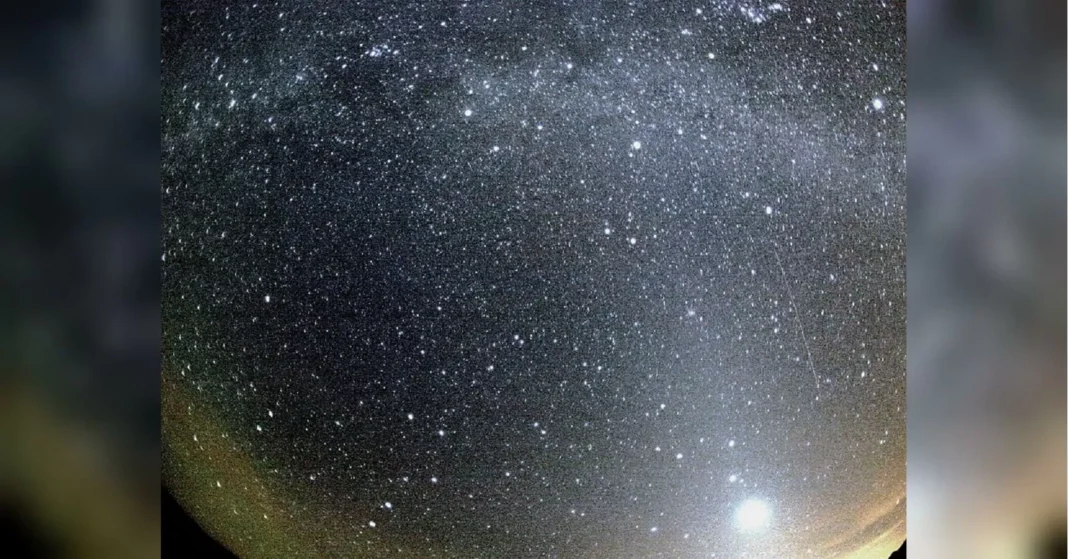The Earth is about to pass through a cloud of debris left behind by the famous comet Halley. This spectacular event is expected to occur on May 6th, 2020 and will provide a unique opportunity for stargazers and scientists alike to witness a rare celestial phenomenon.
Comet Halley, also known as 1P/Halley, is a periodic comet that orbits the Sun every 75-76 years. It was first observed and recorded by Chinese astronomers in 240 BC and has been observed and documented by various cultures throughout history. The comet is named after the English astronomer, Edmond Halley, who calculated its orbit and predicted its return in 1758.
The last time Halley’s comet was visible from Earth was in 1986, and it won’t be visible again until 2061. However, every year in May, the Earth passes through the debris trail left behind by the comet during its orbit. This results in a meteor shower known as the Eta Aquarids, which can produce up to 30 meteors per hour at its peak.
But this year, the Eta Aquarids meteor shower is expected to be even more spectacular as the Earth will pass through a denser part of the debris trail. This is because the comet made its closest approach to the Sun in 1986, leaving behind a more concentrated and active debris trail.
The debris left behind by Halley’s comet is made up of tiny dust particles and small rocks, ranging in size from a grain of sand to a pea. As these particles enter the Earth’s atmosphere at high speeds, they burn up and create bright streaks of light in the sky, known as meteors or shooting stars.
The best time to observe the Eta Aquarids meteor shower will be in the pre-dawn hours of May 6th, when the Earth will be passing through the densest part of the debris trail. This year, the shower will also coincide with a new moon, meaning there will be no moonlight to interfere with the viewing, making it an ideal time to witness the shower.
To observe the meteor shower, you don’t need any special equipment or knowledge. Simply find a dark location away from city lights, lie down on a blanket or a reclining chair, and look up at the sky. It’s recommended to give your eyes about 20 minutes to adjust to the darkness for optimal viewing.
The Eta Aquarids meteor shower is not only a breathtaking sight to behold, but it also provides valuable scientific data for researchers. By studying the composition and trajectory of the meteors, scientists can learn more about the composition and structure of the comet itself.
This year, the European Space Agency (ESA) is planning to launch a mission to study Halley’s comet up close. The mission, named Comet Interceptor, will involve sending a spacecraft to intercept a comet that has never been visited before. The spacecraft will be equipped with instruments to study the comet’s composition, structure, and activity, providing valuable insights into the origins of our solar system.
The passing of the Earth through Halley’s comet debris trail also serves as a reminder of our place in the universe and the constant movement and interaction of celestial bodies. It’s a humbling experience to witness the remnants of a comet that has been observed for thousands of years and will continue to be observed for many more.
In conclusion, the Earth’s passage through the debris trail left behind by Halley’s comet is a rare and exciting event that offers both a visual spectacle and scientific opportunities. So mark your calendars for May 6th, 2020, and don’t miss the chance to witness this celestial show. And who knows, maybe you’ll even make a wish upon a shooting star.

